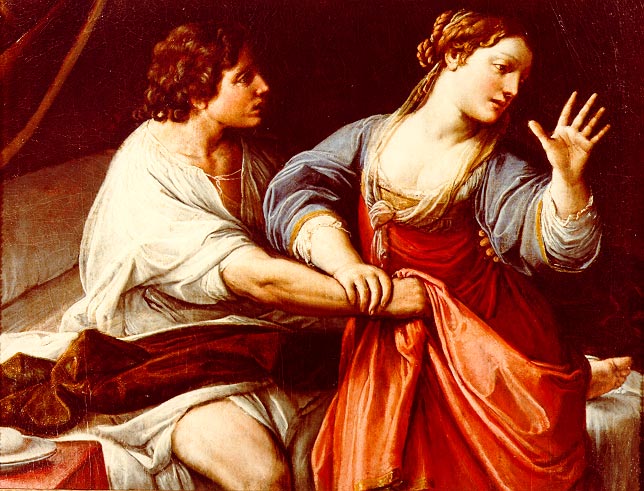 |
| Tiarini's Amnon et Tamar |
In both the stories of Bathsheba and Tamar, it is clear that women are treated as the objects of male lust. In both cases, the consequences of that lust are dire—destructive of the women affected as well as the male perpetrators. And in both cases, there was no legal recourse in ancient times to protect Bathsheba from David or Tamar from Amnon. If a man was powerful enough he could do pretty much whatever he wanted with a woman he desired irrespective of her feelings or wishes. This was apparently especially the case with beautiful women, which adds the further insight that feminine beauty in the stories is at best a two-edged sword—not without its own dangers to the attractive woman.
All of this is fodder for feminist reflection. In his commentary on I and II Samuel, The David Story (Norton, 1999), furthermore, Robert Alter comments at the beginning of II Samuel 14 (p. 275) that at several critical moments in the David story enterprising, resourceful women intervene to take the story in new directions. This in a book otherwise dominated by "powerful martial men." Women, that is, are a central part of the David story but exercise their influence in a way clearly different from men. In sum, the stories of women in the Book of Samuel describe both the weakness and the power of women's place in ancient Israelite society and inspire reflection on their place in ours.
Whether or not the ancient writer and redactors of the Book of Samuel intended it to be a commentary on the place of women in society is not really the point. In our context, it is possible to read it that way. One of the core concerns of the Old Testament is justice. Yahweh was a God of justice. When Nathan confronted David (II Samuel 12) that was precisely the point that he made, and it is clear that Bathsheba as well as Uriah were the victims of lustful injustice. Tamar suffered a double injustice (raped and then rejected). While it is important to understand the original intention of the author and the subsidiary intentions of the redactors of this story, it is also important for us to read it with 21st century eyes.
The Book of Samuel, in sum, is inescapably a source for reflection on feminist issues and concerns. Perhaps, unexpectedly. Generally, overlooked. But there it is. Amen.